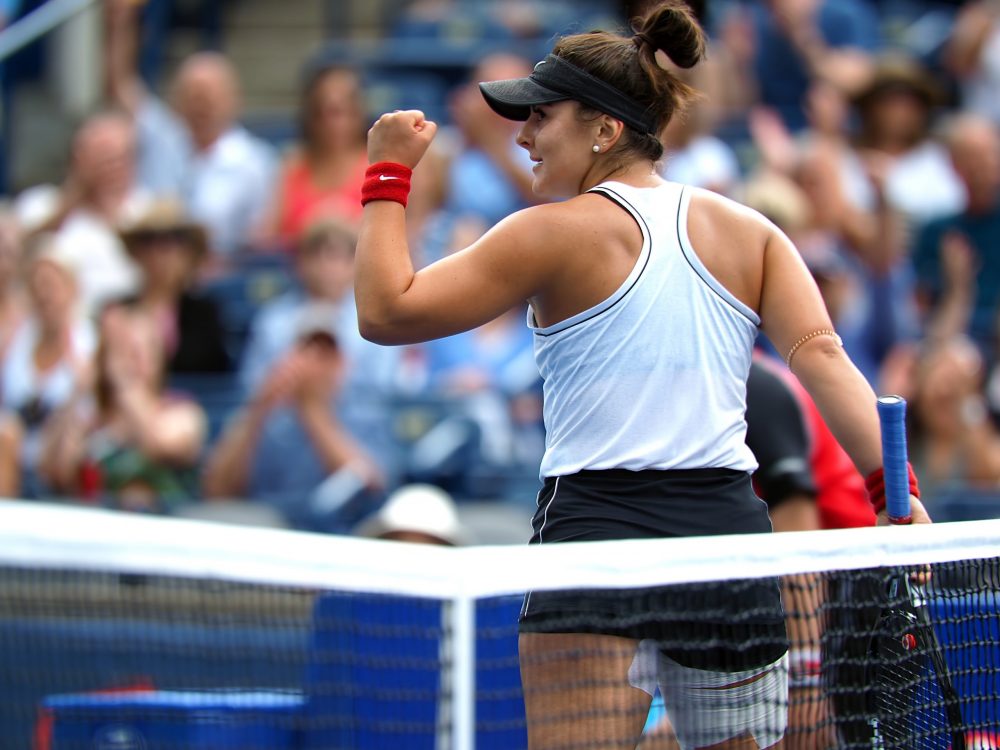As I sat up high but right in at the midpoint of the court at the 2023 Miami Open watching several WTA matches, I could see the game from a telling angle. A thought occurred to me: Are women playing too many baseline points?
WTA players are incredible athletes and models of physical fitness. But man, do they grind from the baseline– in my mind, more than men on the ATP Tour. How do I know? Well I don’t know for sure, but there are some small data points which back it up. More on that below.
I make no apologies for wanting to see women’s tennis survive as a business and succeed as a major draw. I believe it’s worthy of fans’ attention. As such, I don’t want to see the top stars injured. Facts: Female athletes can be more vulnerable to certain injuries. For example, many studies have confirmed the sky high prevalence of ACL tears in women’s soccer. In tennis, one study found that women are more apt to suffer Achilles and back injuries than men.
So why grind?
Read More: Rune, Other Net Rushers Set Themselves Apart at Miami Open
A safer way to play the sport would involve more variation of movement. More volleys, more approaches, more lobs and generally less repetition of the same baseline shots over and over.
Bianca Andreescu’s scary injury at the Miami Open seems like a freak occurrence and certainly might not relate to how the sport is played. Rain stoppages never help. But it’s not good that the world number one Iga Swiatek is starting to show signs of injury and Emma Raducanu, one of the most promising WTA players in years in terms of marketability, has been beset with a cascade of physical problems.
Data to paint the full picture of the baseline grind is elusive. The WTA does not record statistics with the same depth that the ATP Tour does at this time. Infosys does an amazing, and ever-evolving job with data in tennis, but they mainly cover the men’s game, except at the Slams.
For analytics geeks, the Grand Slams are treasure troves of because these tournaments are the only place where the stats recorded are exactly the same.
Average Rally Length: Men vs. Women
I checked with ATP Analyst and Strategist Craig O’Shannessy. His work involving rally length has been eye-opening for the sport. According to O’Shannessy, women average about a half a shot more in rally length than men. Believe it or not, that adds up over the course of a long season.
The biggest reason likely relates to the serve. Men tend to get more free and short points off their serve, which brings that average rally length down. But several top ATP players are starting to employ the volley more.
The truth is, women could use a few more free or easy points.
Groundstrokes Hit: Men vs. Women
Infosys has been delivering a great new set of metrics recently called “stroke summary.” It breaks down the types of shots players hit, including groundstrokes, volleys, lobs, etc.
I decided to conduct an unscientific spot check. Where data was available, I looked at some of the top players in the “Race to the Finals” rankings on each tour, and I wanted to look exclusively at 2-set matches because those are the most common kinds of matches to both genders. (Novak Djokovic is currently #1 in the Race but I excluded him because he was unable to play Indian Wells or the Miami Open in 2023).
The players I examined were: Carlos Alcaraz, Stefanos Tsitsipas, Daniil Medvedev, Jannik Sinner, Iga Swiatek, Aryna Sabalenka, Elena Rybakina and Jessica Pegula.
In 2-set matches, in an average of averages, women were hitting 181 groundstrokes per match. Using that same parameter, men were hitting 169 groundstrokes per match. That’s no small difference.
Of all the players in this (albeit small sample-sized) study, Pegula had the highest average of groundstrokes per 2-set match at 213. Tsitsipas had the lowest at 129.
Read More: Alcaraz and Tsitsipas: Notes from Miami Open Practice Session
The upshot: Women might be grinding from the baseline more than they need to. Adding variety with volleys and other types of skill-specific shots might ease up repetition on the body. An added benefit? More variation is more interesting to watch.
















